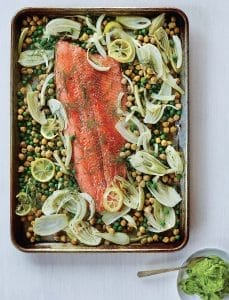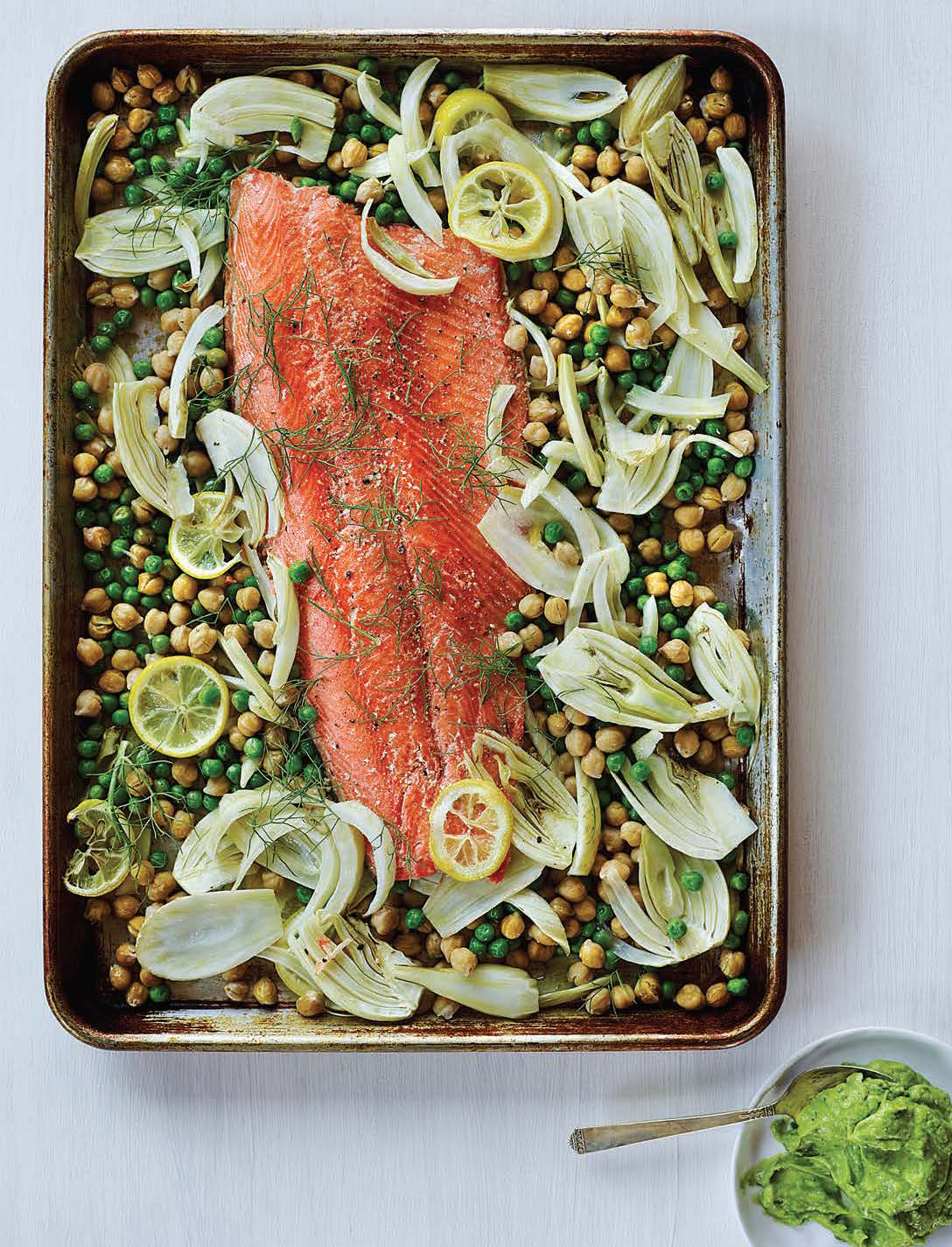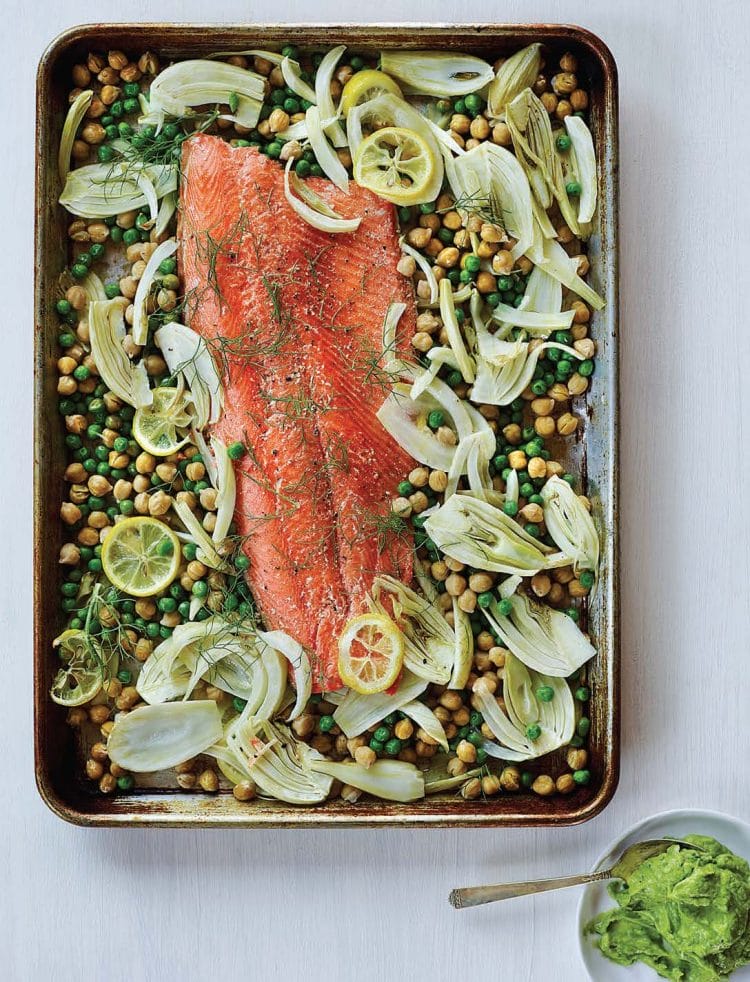Slow-roasting salmon is not only a brain-friendlier method than cooking over higher heat, it’s practically foolproof, turning out perfectly cooked salmon every time. Think tender, rosy-hued fish infused with flavor from the lemons and the fennel. It’s a streamlined dish that comes together quickly, too, thanks to pantry staples like canned chickpeas and frozen peas. And because the salmon roasts in the same sheet pan as the vegetables, cleanup is fast.
Once you put the salmon in the oven, mix up the avocado butter (a recipe handed down to me from my mother). It’s wonderful slathered on grilled corn or peak-season sliced tomatoes. It’s also fantastic served on other fish and seafood. Dollop it on grilled shrimp or cod fillets, or fold it into tuna or sardine salad. Because avocado butter freezes well, it’s a good way to use up a bunch of ripe avocados that need to be eaten. Of course, if you don’t feel like getting out a food processor, you can use a fork to mash the avocado with the butter and the other ingredients, adding the chopped parsley last.
Slow-Roasted Salmon With Avocado Butter
 4 to 6
4 to 6
Ingredients
- 2 small fennel bulbs (8 ounces/230 g), thinly sliced, fronds reserved for garnish
- Two 15-ounce (425 g) cans chickpeas, drained (about 3 cups)
- 1 large lemon, thinly sliced, seeds removed
- ½ cup (120 ml) water
- ¼ cup (60 ml) extra-virgin olive oil, plus more for drizzling
- 1 teaspoon kosher salt
- One 1½-pound (680 g) whole salmon fillet, skin-on (preferably wild- caught), about 1 inch (2.5 cm) thick (see Tip)
- ¼ teaspoon freshly ground black pepper
- 1½ cups (230 g) peas (fresh or frozen)
- 2 large, ripe avocados, mashed (about 1 cup)
- 3 tablespoons fresh lemon or lime juice
- 2 tablespoons unsalted butter, preferably grass- fed, at room temperature
- 2 tablespoons fresh flat- leaf parsley leaves
- 1 medium garlic clove, minced (about ½ teaspoon)
Instructions
- 1 Set an oven rack in the center position and preheat the oven to 300°F (150°C).
- 2 Toss the fennel, chickpeas, lemon, water, 2 tablespoons of the oil, and ½ teaspoon of the salt on a rimmed baking sheet until evenly coated, then spread into an even layer. Top with the salmon, skin side down, and pour the remaining 2 tablespoons oil over top. Sprinkle the salmon with pepper and ¼ teaspoon of the salt.
- 3 Bake for 20 to 28 minutes, stirring in the peas after 10 minutes, until the salmon is just turning opaque. (If using an instant-read thermometer, take the temperature in the thickest part of the fish: 125°F/50°C for medium-rare; up to 140°F/60°C for well done.)
- 4 Meanwhile, combine the avocados, lemon juice, butter, parsley, garlic, and the remaining ¼ teaspoon salt in the bowl of a food processor. Process until completely smooth. Keep in the refrigerator until ready to eat.
- 5 To serve, divide the salmon and vegetables between plates and spoon a tablespoon of any pan sauce over top. Top each piece of fish with 2 tablespoons avocado butter, some of the reserved fennel fronds, and a drizzle of oil. Top with more pepper, if you like.
- 6 To store extra avocado butter, transfer to an airtight container with a piece of waxed paper or parchment paper pressed onto the surface of the butter to prevent browning. It will keep like this for up to 3 days in the refrigerator or 3 months in the freezer.




